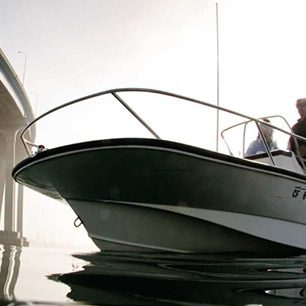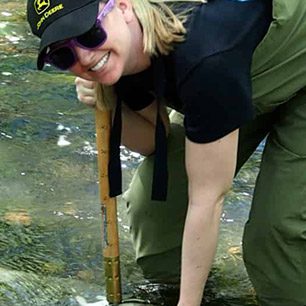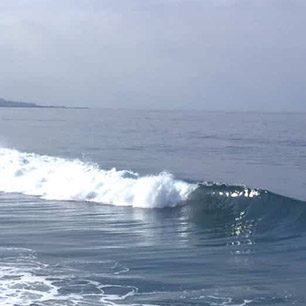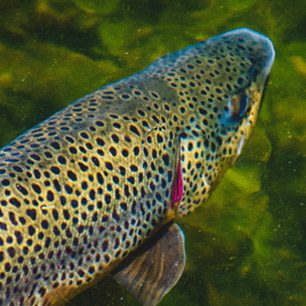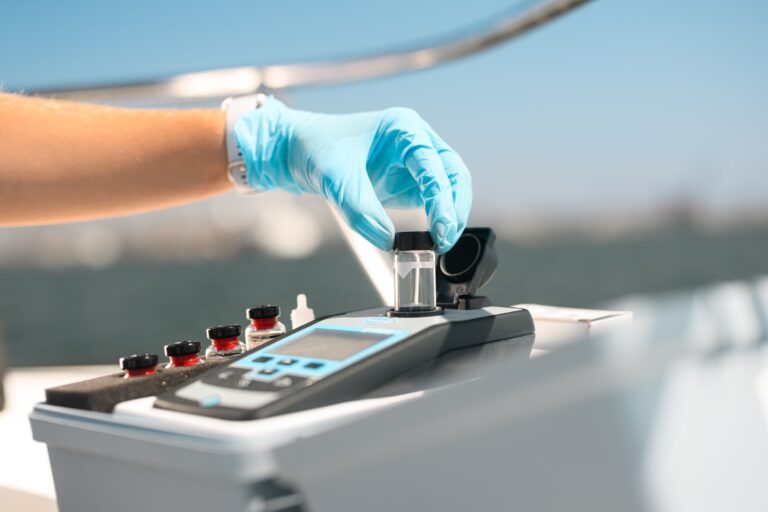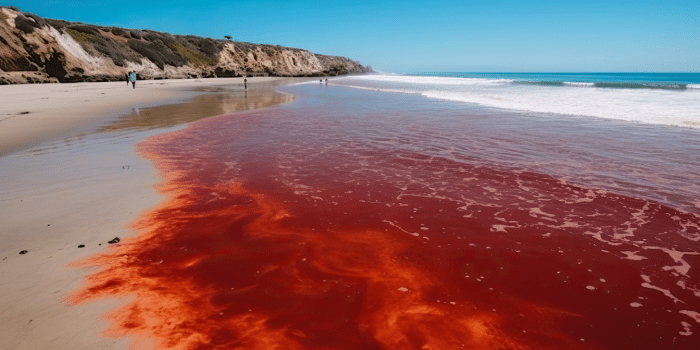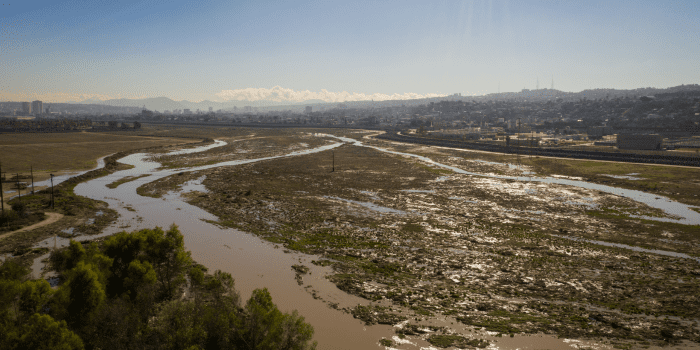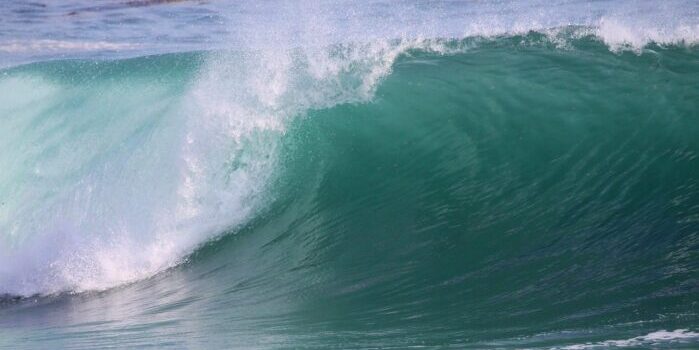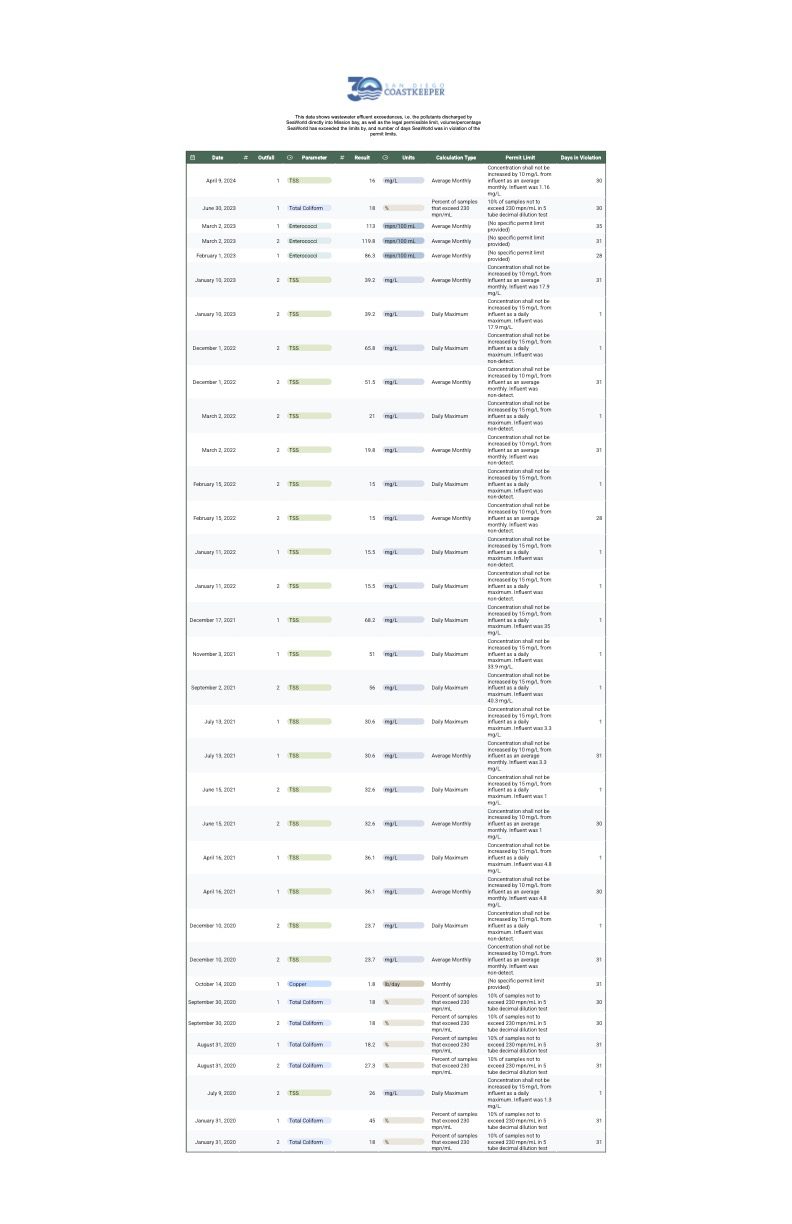From toxic fireworks debris to improperly treated aquarium wastewater, SeaWorld has a years-long history of violating Clean Water Act permits while knowingly risking public health and the environment to maintain outdated traditions aimed at getting park visitors to spend to the end.


Looking out from the shores of Fiesta Island gives you a sense of tranquility—blue skies above the placid waters of Mission Bay, a recreational wetland in the heart of San Diego that’s packed with throngs of people, native plants, and marine animals year-round. But cast your gaze downward and you may get a sense that something is wrong.
Hidden among the sand on Fiesta Island are shell casings and scraps of mortar—debris from the fireworks displays put on by SeaWorld, just a short swim away. The shrapnel is often sharp (watch your step!) and laden with the residue of industrial chemicals. Dive below the waterline and one can trace the litter directly beneath the barge from which SeaWorld launches up to 150 fireworks shows each year.
That’s exactly what Natalie Clagett, attorney for Coast Law Group, did between May and October 2024. What she found on her scuba dives was a “shocking amount” of toxic fireworks waste, a clear sign that SeaWorld is regularly failing to abide by the terms of its fireworks permit. “You go down there and it’s just wires. Like, does seagrass grow in orange?” Clagett expressed to the Voice of San Diego.


Among the pollution collected from under SeaWorld’s launch barge were yards of wires used for fireworks shows.
Authorized under the National Pollutant Discharge Elimination System (NPDES) of the Clean Water Act—a vital statute now under siege by the current federal administration—these permits have played a crucial role in the major improvements in water quality (and thereby public health) since enacted in 1972. By disregarding its responsibilities under the Clean Water Act, SeaWorld endangers the health of the local environment and visitors to Mission Bay.
The impact of SeaWorld’s near-nightly displays doesn’t stop with fireworks pollution. SeaWorld has been insufficiently treating the water that it discharges from animal captivity tanks back into the bay. Coastkeeper and Coastal Environmental Rights Foundation (CERF) also discovered that since at least 2020, the park has been out of compliance with its Waste Discharge Permit for more than 500 days.
These ongoing violations led San Diego Coastkeeper and CERF to jointly file a lawsuit against SeaWorld in March 2025 for ongoing Clean Water Act violations in Mission Bay.
Unfortunately, this is just the latest complaint against SeaWorld. The corporation also faces public backlash for a myriad of fouls, including:
- Death, disturbance, and ongoing distress to local and migratory birds
- Ongoing auditory distress to pets, especially dogs, in nearby residential areas
- Ongoing auditory distress to nearby residents, including children, veterans and the elderly suffering from disorders like Autism and PTSD
- Violations of air quality regulations and late reporting
- $12 million in unpaid rent to the City of San Diego (recently settled)
- A dark legacy of inhumanely capturing and mistreating marine mammals, particularly orcas and porpoises
SeaWorld’s Fireworks Are Polluting Mission Bay
Every year, SeaWorld hosts up to 150 fireworks events, each one firing between 250 and 1,750 shells directly over Mission Bay. The mesmerizing colors juxtapose damaging levels of waste and toxic chemicals that fall into the water during every single show.
By its own admission, after large shows like July 4th, SeaWorld collects only about 25% of fireworks materials by weight during its post-event land and water surface cleanups, according to the monitoring and reporting data required by the regional Fireworks Permit. Even after subtracting the “net explosive weight” of materials lost during detonation (25-50%), we estimate a minimum of 340 lbs of unrecovered, chemical-laden trash was left in our waters after July 4th, 2024, for just one show. And these shows happen almost every night in the summertime.
Over the years, SeaWorld has discharged many tons of such debris into Mission Bay, effectively treating San Diego’s marquee aquatic playground as a corporate dump. Worse still, these fireworks shows exist solely to keep people at the park longer in order to maximize SeaWorld’s profits, while externalizing the cost of rampant environmental pollution onto the people of San Diego.


In between incendiaries, it’s easy to see the threat fireworks pose to water and air quality. That entire smoke cloud—and all the chemicals, ash, and debris within—land in Mission Bay. Photo: Natalie Clagett, CERF/Coast Law Group
Why SeaWorld's Fireworks Debris is Harmful
Debris collected from both the shore of Fiesta Island and the seabed beneath SeaWorld’s fireworks barge include shattered plastic caps, ignition wires, shell casings, cardboard, foil, and ignitors—all contaminated with hazardous chemicals like barium, chromium, copper, and cobalt. Further still, burning embers shower into the bay with nearly every shell fired. Research is crystal clear that “these metallic elements are considered systemic toxicants that are known to induce multiple organ damage, even at lower levels of exposure” for both humans and animals. [1]
When exposed to heavy metal toxicity in the environment, people can experience symptoms like vomiting, nausea, stomach pain, and fatigue—not to mention increased risk for certain cancers. [2].
Some of the discharges even interfere with iodide uptake in human thyroid glands. Others, like phosphorus, can lead to toxic algal blooms, eutrophication, and widespread fish kills. [3] It’s not the kind of stuff you want in the water where your family swims or the sand you walk your dog on.
By law, SeaWorld is required to collect discharges floating on the water’s surface within 12 hours of a fireworks show. And, for the five days following each show, crews are to walk nearby beaches to retrieve debris. But for the most part, evidence strongly indicates that SeaWorld neglects its responsibility to clean up its mess.


Taken by a CERF representative on February 17, 2025, on Fiesta Island following SeaWorld’s Presidents’ Day Weekend fireworks shows. Displays fireworks debris, including chemical-laden cardboard, plastic, and blasting caps, along the tide wrack line. This is just a small snapshot of the pollution burden – over 50 images showing more of the same were taken all along Fiesta Island. Nobody else was observed cleaning up debris.
By violating the requirements of their fireworks discharge permit, SeaWorld is violating the Clean Water Act, the main federal law that regulates pollution in US waters. When corporations ignore these imperative laws, it’s often up to watchdog organizations like Coastkeeper and CERF to hold them legally accountable.
“SeaWorld’s flagrant violations of federal law are causing serious harm to Mission Bay’s marine environment, and contradict the company’s stated mission to conserve wildlife worldwide,” said Phillip Musegaas, Executive Director of Coastkeeper. “Their failure to clean up their fireworks mess and inability to properly treat aquarium water before discharging it back into the Bay must end.”
Consequently, these discharges are left to sink to the Bay’s seafloor, or wash up on the beaches of Fiesta Island, one of Mission Bay’s most popular areas for recreation, but also an ecologically important habitat.


Phillip Musegaas, Executive Director of San Diego Coastkeeper. Behind him, SeaWorld and the barge from which it launches an excessive 150 fireworks shows each year.
Discharging Animal Tank Wastewater Into Mission Bay
SeaWorld San Diego has its own seawater filtration system, but insufficiently treats the wastewater from its saltwater aquarium tanks that it returns to Mission Bay, resulting in elevated levels of several pollutants being knowingly released.
Water quality testing and SeaWorld’s own reporting show that the company routinely exceeded its effluent limitations for pollutants it discharged into public waters, including total coliform, total suspended solids (“TSS”), copper, and enterococci. Instead of properly treating wastewater from its aquarium tanks (which include marine mammal fecal matter), SeaWorld has violated its Waste Discharge Permit at least 500 days since January 1, 2020. It also repeatedly failed to report certain pollutant exceedances going back almost five years.
Sadly, it’s not unusual for waste-producing corporations operating near public waters to violate their permit limitations. In chasing ever-larger bottom lines, many corporations cut corners, fail to properly operate, maintain, or repair equipment, and thus discharge un- or undertreated wastewater into the watershed. To reduce expenses and maximize profits, these corporations turn a blind eye to the negative effects their operations have on the environment, visitors, and surrounding communities. This severely undermines public trust in corporate responsibility.
Watchdogs, Like Coastkeeper, Play A Critical Role
Unfortunately, permit enforcement is lax as the agencies tasked with enforcing the Clean Water Act are overextended and under-resourced. They will never be able to catch every violator and bring them into compliance. That’s where San Diego Coastkeeper comes in. The Clean Water Act allows groups like Coastkeeper to step into the shoes of regulators and bring litigation to ensure permit compliance to protect our precious public resources.
Greenwashing Only Makes It WOrse
SeaWorld also engages in extensive greenwashing, including around its discharges. Greenwashing is a deceptive and widespread tactic of using false or misleading claims to make an organization seem more environmentally friendly. [4] Anyone who has toured SeaWorld San Diego’s facilities may have heard employees claiming that the water SeaWorld discharges is cleaner than what it intakes. This messaging is specifically designed in an attempt to earn SeaWorld more grace than it deserves in the court of public opinion.
What SeaWorld is actually saying is that they put slightly fewer toxins back into the Bay than were present when they draw the water out to use in their tanks. The fact remains that SeaWorld routinely discharges a higher volume of pollutants than are allowed by their Waste Discharge Permit—a permit meticulously devised to protect human health and the environment.
Of the Seven Deadly Sins of Greenwashing, this obviously violates “the sin of the lesser of two evils.”
Building A Case Against Seaworld
On March 6th, 2025, following a Notice of Intent to sue (NOI) submitted in November of the previous year, San Diego Coastkeeper and the Coastal Environmental Rights Foundation (CERF), represented by Coast Law Group, filed a citizen suit enforcement case against SeaWorld for its multiple, ongoing Clean Water Act violations.
Thanks to progressive litigation and advocacy work dating back to the early 2000s, Coastkeeper and CERF were integral in requiring Clean Water Act permits for over-water firework displays. These advocacy efforts drove the nation’s first permits regulating the discharge of fireworks under the Clean Water Act.
By filing a lawsuit against SeaWorld, we aim to put an end to these ongoing discharge violations and, by doing so, uphold the imperative permit requirements we helped to establish.


Image from Forbes article, “Drone Shows Are ‘Way Cooler’ Than Fireworks” (2020) Photo credit: “Drone100” performed by Ars Electronica Futurelab for Intel, in 2015. (Credit: Preetam Choudhury / CC BY-SA 4.0)
What Are We Asking For?
With our pending lawsuit against SeaWorld, Coastkeeper and CERF hope to see an end to SeaWorld’s fireworks displays. It’s not that we don’t appreciate the tradition of fireworks; it’s that we now know their excessive use is inarguably damaging—and it’s time to make a change.
In the words of Councilmember Joe LaCava, “Fireworks, night after night, is something that has to end. It’s one thing to do Fourth of July or start of the summer season shows, but 150 nights a year is just way beyond.” (Voice of San Diego) Coastkeeper supports the elimination or, at the very minimum, significant reduction of SeaWorld’s fireworks shows.
Some alternatives to fireworks displays include:
- Laser light shows
- Drone shows
- On-premises events
Zero-waste, minimally impactful displays against a backdrop of the night sky are both possible and spectacular. “SeaWorld tested out [drone shows] in the past,” points out Coastkeeper’s senior attorney, Patrick McDonnough, referring to the laser and drone shows that ooh-ed and ahh-ed spectators from 2017-2020. SeaWorld has already proven this; it’s time they move in that direction.
Scared To Death: Fireworks Distress People, Pets, and Wildlife
It’s naive to think that detonating thousands of pounds of explosives almost every night won’t have negative impacts on the surrounding wildlife and residents. So it’s not surprising that this isn’t the first time SeaWorld’s fireworks displays have come under fire, so to speak. Environmental groups and local citizens have long scrutinized the flagrant displays.
The San Diego Bird Alliance called for an end to all Mission Bay fireworks following the 2024 July 4th displays from both SeaWorld and Discover Mission Bay, which caused the death of dozens of tern eggs, chicks and adult birds, who were scared into a panic flight from the thousands of pounds of fireworks that were launched that weekend.
Local residents are also fed up. There’s no shortage of people just across the river from SeaWorld who suffer from PTSD. The fireworks displays are triggering at worst, disruptive to their peace at best. Following the media coverage of our press release notice of intent (NOI) to sue SeaWorld, we were contacted by numerous residents sharing their stressful experiences.
Other nearby residents voiced frustration about how the nightly fireworks stress out their four-legged companions. Many dogs are especially prone to anxiety about fireworks. This means that pets are being put through near-nightly stress for the sake of SeaWorld’s marketing. The San Diego Humane Society opposed the continued use of traditional fireworks shows, noting that SDHS is overrun every year after July 4 by stray pets displaced by fireworks.
A father of a child with autism wrote to us directly to thank us for our litigation work, and to share that his child is triggered every night that the fireworks go off, which is, of course, around bedtime. His fatigue and desire for the vain displays to end—for evenings of comfort for his child—was palpable even through email.
Now it seems leaders of San Diego’s local government have had enough. This past September, the Mission Bay Parks Committee voted unanimously to urge the City to modify or cancel SeaWorld’s fireworks altogether because of their impact on native Mission Bay wildlife. City Councilmember Joe LaCava wants an end to the fireworks. He has stated he’s examining how the City can limit SeaWorld’s fireworks displays via its lease agreement. It certainly doesn’t help that SeaWorld just settled another lawsuit with the City for $12 million in unpaid rent. (The corporation settled to pay $8 million—that’s no small loss in funding for San Diegans.)
Consider signing the San Diego Bird Alliance petition to protect nesting birds in Mission Bay.
SeaWorld’s Legacy of Violating Public Trust
We feel it’s both necessary and relevant to show that these discharge permit violations are not a one-off foul by SeaWorld. The corporation has a long history of what many people consider corporate misconduct, most notably by its mistreatment of marine mammals like dolphins, orcas, and beluga whales.
The investigative documentary Black Fish (2013) exposed the captive nature of SeaWorld’s animal displays. Public backlash and declining ticket sales drove SeaWorld to eventually stop capturing wild dolphins and orcas. (It had loopholed the Marine Mammal Protection Act of 1972 by claiming economic hardship. Apparently leaving orcas in the wild was bad for business.) It also ended its orca breeding program, and prohibited trainers from entering the water with orcas during shows after the death of trainer Dawn Brancheau.
Final Thoughts
Clean water is our right, and maintaining a healthy ecosystem is our duty as stewards of the water. When Coastkeeper files a lawsuit, it’s to uphold this fundamental right and ensure that our rivers, streams, lakes, bays, and beaches are safe places for people and wildlife.
If our legal pressure successfully brings an end—or even a dramatic reduction—to the fireworks shows, it won’t right all the wrongs of the past or present, but it would demonstrate that SeaWorld is willing to take the preservation of aquatic environments more seriously. SeaWorld’s marketing campaigns extol the company’s purported conservation efforts, but its real-world actions are irresponsible, unsustainable, and in many cases inhumane. Our litigation aims to drive SeaWorld to operate more responsibly and intentionally, and to reflect the aspirational company mission it has so far fallen short of.


